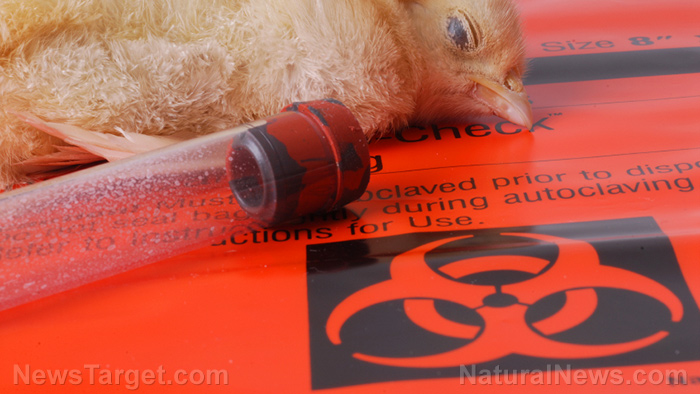Sweden Says HPV Vaccines Cause Cervical Cancer

One of the largest ever studies on the effects of vaccines has concluded that the HPV vaccine increases the risk of a person developing cancer.
According to the April 30 study, cervical cancer vaccines known as Gardasil®, Gardasil 9® and Cervarix® – all exclusively manufactured by Merck & Company and GlaxoSmithKline – have been linked to an increase in cervical cancers in those who receive them.
Activistpost.com reports: These vaccines are loaded with aluminum adjuvants.

Gardasil®
Each 0.5-mL dose of the vaccine contains approximately 225 mcg of aluminum (as Amorphous
Aluminum Hydroxyphosphate Sulfate adjuvant), 9.56 mg of sodium chloride, 0.78 mg of L-histidine,
50 mcg of polysorbate 80, 35 mcg of sodium borate, <7 mcg yeast protein/dose, and water for injection.
The product does not contain a preservative or antibiotics.
Source: Merck (PDF, Pg. 12)
Gardasil 9®
Each 0.5-mL dose of the vaccine also contains approximately 500 mcg of aluminum (provided as
AAHS), 9.56 mg of sodium chloride, 0.78 mg of L-histidine, 50 mcg of polysorbate 80, 35 mcg of sodium
borate, <7 mcg yeast protein, and water for injection. The product does not contain a preservative or
antibiotics.
Source: Merck (PDF, Pg. 11)
Cervarix® (Recombinant, AS04 adjuvanted)
This AS04 adjuvant system comprises aluminium hydroxide (Al(OH)3) and 3-O-desacyl-4’-
monophosphoryl lipid A (MPL). (Pg. 1)
Note that under the Description, no amount in mcg or otherwise is listed for the aluminum content!
Genotoxicity The genotoxic potential of CERVARIX has not been investigated. (Pg. 15)
Carcinogenicity The carcinogenic potential of CERVARIX has not been investigated. (Pg. 16)
Source: GlaxoSmithKline PDF
Even though the GlaxoSmithKline package insert for Cervarix® seemingly skirts stating the amount of aluminum in the GSK HPV vaccine, I was able to find the content of aluminum hydroxide on the European Union health documents website below and it is 0.5 milligrams!
Cervarix suspension for injection
Human Papillomavirus vaccine [Types 16, 18] (Recombinant, adjuvanted, adsorbed)
2adjuvanted by AS04 containing: 3-O-desacyl-4’- monophosphoryl lipid A (MPL)3 50 micrograms
3adsorbed on aluminium hydroxide, hydrated (Al(OH)3) 0.5 milligrams Al3+ in total
Source: Europa (PDF, Pg. 2)
The Indian Journal of Medical Ethics Online first published the Comment article “Increased incidence of cervical cancer in Sweden: Possible link with HPV vaccination” April 30, 2018 DOI:10.20529/IJME.2018.037.
According to the Abstract for the article by Lars Andersson,
The Centre for Cervical Cancer Prevention in Sweden has noted in its annual report a substantial increase in the incidence of invasive cervical cancer, especially during the two years 2014 and 2015. [….]
The increase in the incidence of cervical cancer was shown to be most prominent among women 20–49 years of age while no apparent increase was observed among women above 50.
I [Andersson] discuss the possibility that HPV vaccination could play a role in the increase in the incidence of cervical cancer by causing instead of preventing cervical cancer disease in women previously exposed to HPV. A time relationship exists between the start of vaccination and the increase in the incidence of cervical cancer. The HPV vaccines were approved in 2006 and 2007, respectively and most young girls started to be vaccinated during 2012–2013.
Lars Andersson is associated with the prestigious Karolinska Institute.
In the Introduction section of the Andersson article, he cites and translates “The Centre for Cervical Cancer Prevention (NKCx) in Sweden has noted in its annual report of 2017(1), which includes data up to 2016,” as follows:
The age-standardised incidence of invasive cervical cancer in Sweden has increased substantially in the last two years (20%) and there is a statistically significant increase for the entire period 2005–2015. The incidence in Sweden for 2014–2015 is 11.5 per 100,000 women. The increase in the last two years can be seen in all counties except Södermanland, Skåne, Jämtland and Västerbotten. Substantial and statistically significant increases are seen for Östergötland, Jönköping, Blekinge, Halland, Värmland, Örebro and Dalarna, with an average yearly increase of 7%–8%. Tendencies of substantial increases are also seen for Uppsala, Gotland, Västmanland and Västerbottenwith yearly average increases of 4% or more.
The above information was gathered from the statistical database managed by the National Board of Health and Welfare in Sweden.


I encourage all readers, especially parents and young girls/women of HPV vaccination age groups, to read the comprehensive Discussion Mr. Andersson puts forth in that paper.
It is noteworthy, and highlights imperative data cited above, which all public health agencies globally need to study and research in order to make correct decisions regarding the false, hyped promises offered by the HPV vaccine makers’ apparent conflict of interest and consensus science relative to the HPV vaccines.



